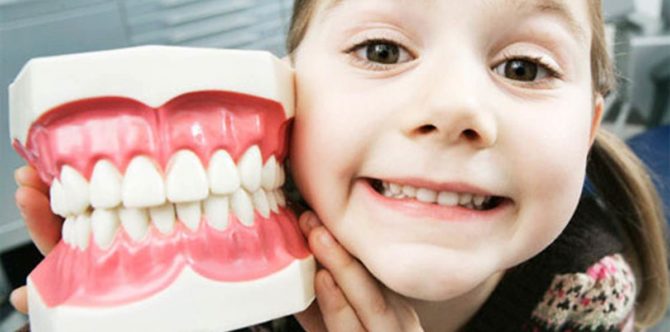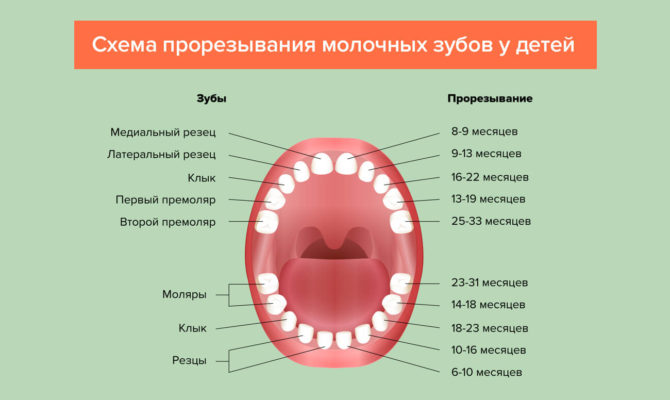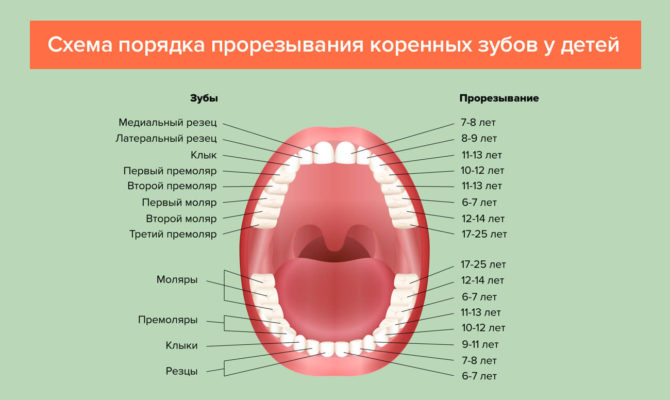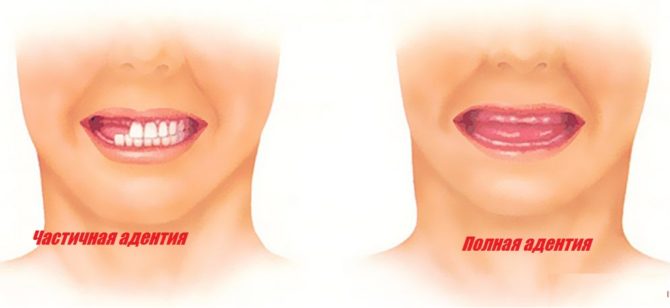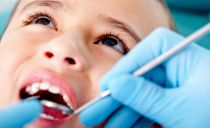How many milk and permanent teeth should be in children, the amount is normal in children by age
The formation and development of the baby’s milk teeth begins in the womb - from the fifth week of pregnancy. Immediately after the birth of the baby, his teeth are hidden in the gums, they will begin to erupt when the baby is 6–9 months old.
Temporary incisors, fangs and molars help the maxillofacial skeleton to form correctly, prepare a place for permanent "brothers", which should be replaced, affect their health. It is not so important the number of baby teeth in a child in a given age period, how much their correct growth and healthy condition.
Content
How many baby teeth should a child have by year
Parents who care about the health of the newborn firstborn are looking forward to the appearance of the first tooth, carefully study the temporary norms and terms of teething, developed by dentists, and worry if something goes wrong. Experienced mothers are well aware that the timing and sequence of teething are individual for each baby.
In most children, the first tooth appears at the age of 6 months. In some babies, the process of teething starts at 4 or 5 months. Other children, being completely healthy, do not have teeth for 8–9 months, and sometimes up to a year.
The first incisors are cut located in the front of the jaw:
- first two lower central incisors appear;
- then the top four - two central and two side;
- the two lower lateral incisors begin to erupt already closer to 12 months.
At the rate of one year old the child should have 8 teeth. But if by this time there will be only 2 or 12 already, these are also variants of the norm. Dental observations show that there are significant differences in the timing of the appearance of incisors, fangs and molars in different children. Early or late teething is often a hereditary trait. Do not worry about the “wrong” terms, if the baby is healthy, cheerful, and he has no other development problems. Each child develops at his own individual pace.
How many milk teeth should be in children by 3 years
The process of teething in children ends in two and a half to three years. By this age, the baby's mouth should have 20 dental units - ten each in the upper and lower jaw.
A set of 16 incisors, fangs and molars - the average norm for a child of two years:
- the first molars erupt in a year and a half;
- then fangs appear;
- second molars begin to creep out closer to two years of age.
At three years old, when all the temporary teeth erupted, it is necessary to show the child to a good dentist. You need to make sure that the teeth are healthy and grow correctly.
How many permanent teeth should a child have?
Permanent change of primary teeth begins at the age of six, and at 12 years old, all temporary units should already change - for someone a little earlier, for someone a little later.
From 6 to 8 years old, permanent incisors appear, their teething occurs in the same order in which their dairy "brothers" grew. From 9 to 12 years old premolars and fangs change. By the age of 7, the first molars erupted in the child, which were not preceded by milk teeth, were the first molars. The second molars should appear before the age of 14, and the third by 25.
Normally, by the age of 14, the child should have exactly 28 dental units, wisdom teeth (the last 4) do not grow in everyone.
Dates of teething and replacement of primary teeth: table
| The name of the tooth pair | Teething (months of life) | Prolapse (years of life) |
|---|---|---|
| Lower dentition | ||
| Central incisors | 8–12 | 6–7 |
| Lateral incisors | 9–13 | 7–8 |
| Fangs | 16–22 | 10–12 |
| First molars | 13–19 | 9–11 |
| Second molars | 25–33 | 10–12 |
| Upper dentition | ||
| Central incisors | 6–10 | 6–7 |
| Lateral incisors | 10–16 | 7–8 |
| Fangs | 17–23 | 9–12 |
| First molars | 14–18 | 9–11 |
| Second molars | 23–31 | 10–12 |
Adentia - complete or partial absence of tooth germs
Separately, we should talk about the development of adentia in children - the absence of dental rudiments, which can be partial or complete. The disease can be caused by a malfunction in the endocrine system or an infectious disease.
If the process of teething is with serious deviations from the norm, you must seek medical help. With the help of an x-ray, the dentist will determine whether there is a tooth germ in the gum and prescribe a treatment aimed at restoring the dentition.
If a complete primary adentia is detected, which is extremely rare, the doctor may recommend prosthetics. But for young children, this option is not a panacea, since the pressure of the prosthesis on the jaw can lead to a violation of its growth. The child should be monitored regularly by a specialist. Dentistry is developing rapidly, and there is a hope that soon such children can be helped more effectively.
Factors Affecting Dental Health
The health of permanent teeth depends on the condition of milk teeth, with which they must be replaced. The color and shape of incisors, fangs, molars are laid genetically. The number of teeth in a child at one age or another is also due to hereditary factors. But the relationship of heredity with health is not so straightforward.
A great influence on the condition of the dentition is exerted by:
- The nature and diet of a pregnant woman before and after childbirth.
- The chemical composition of drinking water, including fluoride content.
- Oral hygiene. It is important to teach a child to brush his teeth twice a day and teach how to use dental floss.
The destruction of enamel occurs under the influence of food acids, due to a lack of calcium, fluorine, magnesium, phosphorus, vitamin D, the occurrence of gastritis, the development of endocrine pathologies.
Milk teeth must be treated, despite the fact that they all must be replaced. Untreated caries in the future will cause permanent tooth decay.
Adults must provide the child with a healthy diet rich in vitamins and minerals. An important factor contributing to the proper formation of the maxillofacial apparatus, bite and strong enamel is breastfeeding during the first year of life. Breast milk contains minerals and trace elements necessary for the formation of healthy incisors, canines and molars.
By three years, the baby should have 20 deciduous teeth. In what sequence and in what age period they all appear, it is impossible to determine exactly. There is nothing wrong with the fact that the number of teeth in your child is not the same as that of his peers, especially if the teething period has shifted by no more than six months.

